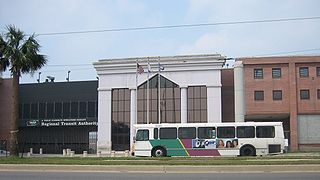
The New Orleans Regional Transit Authority is a public transportation agency based in New Orleans. The agency was established by the Louisiana State Legislature in 1979, and has operated bus and historic streetcar service throughout the city since 1983. In 2023, the system had a ridership of 9,707,300, or about 29,700 per weekday as of the fourth quarter of 2023, making the Regional Transit Authority the largest public transit agency in the state of Louisiana.

The San Francisco Municipal Railway ( MEW-nee; SF Muni or Muni), is the primary public transit system within San Francisco, California. It operates a system of bus routes, the Muni Metro light rail system, three historic cable car lines, and two historic streetcar lines. Previously an independent agency, the San Francisco Municipal Railway merged with two other agencies in 1999 to become the San Francisco Municipal Transportation Agency (SFMTA). In 2018, Muni served 46.7 square miles (121 km2) with an operating budget of about $1.2 billion. Muni is the seventh-highest-ridership transit system in the United States, with 142,168,200 rides in 2023, and the second-highest in California after the Los Angeles County Metropolitan Transportation Authority.
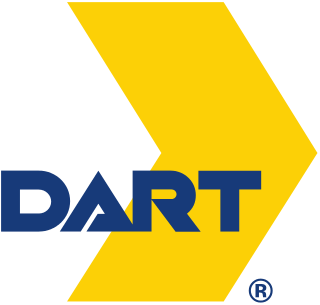
Dallas Area Rapid Transit (DART) is a transit agency serving the Dallas–Fort Worth metroplex of Texas. It operates buses, light rail, commuter rail, and high-occupancy vehicle lanes in Dallas and twelve of its suburbs. In 2023, the system had a ridership of 50,463,300, or about 166,900 per weekday as of the fourth quarter of 2023.

The Los Angeles County Metropolitan Transportation Authority (LACMTA), branded as Metro, is the county agency that plans, operates, and coordinates funding for most of the public transportation system in Los Angeles County, California, the most populated county in the United States, and the largest public transit agency in the county as well.

Calgary Transit is the public transit agency which is owned and operated by the city of Calgary, Alberta, Canada. In 2019, an estimated 106.5 million passengers boarded approximately 1,155 Calgary Transit vehicles. It operates light metro (LRT), urban tramway, bus rapid transit (BRT), para-transit, and regular bus services. In 2023, the system had a ridership of 144,385,200, or about 463,000 per weekday as of the fourth quarter of 2023.

Hillsborough Area Regional Transit provides public transportation for Hillsborough County, Florida. The agency operates fixed-route local and express bus service, paratransit service, demand-response service, MetroRapid service, and the TECO Line Streetcar system. In 2023, the system had a ridership of 12,929,700.
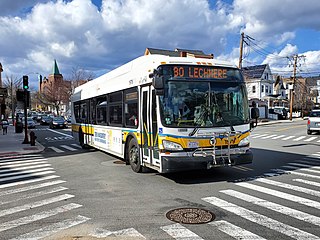
The Massachusetts Bay Transportation Authority (MBTA) operates 152 bus routes in the Greater Boston area. The MBTA has a policy objective to provide transit service within walking distance for all residents living in areas with population densities greater than 5,000 inhabitants per square mile (1,900/km2) within the MBTA's service district. Much of this service is provided by bus. In 2023, the system had a ridership of 91,459,700, or about 303,300 per weekday as of the fourth quarter of 2023.
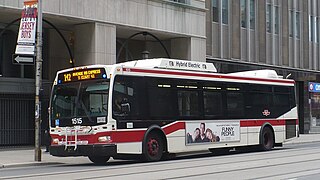
The Toronto Transit Commission (TTC) uses buses and other vehicles for public transportation. In 2018, the TTC bus system had 159 bus routes carrying over 264 million riders over 6,686 kilometres (4,154 mi) of routes with buses travelling 143 million kilometres in the year. As of 2021, the TTC has 192 bus routes in operation, including 28 night bus routes. In 2023, the system had a ridership of 362,041,400, or about 1,222,800 per weekday as of the fourth quarter of 2023.
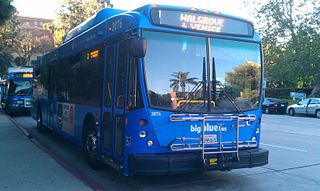
Big Blue Bus is a public transit agency that provides public bus services for the city of Santa Monica and the greater Westside region of Los Angeles County, California. The service, operated by the city of Santa Monica, was founded on April 14, 1928 and throughout its existence has used a blue color scheme for its buses, leading to the Big Blue Bus nickname that would later become the official name of the agency. In 2023, the system had a ridership of 8,289,600, or about 29,900 per weekday as of the fourth quarter of 2023. Big Blue Bus receives funding from the Los Angeles County Metropolitan Transportation Authority (Metro) and offers connections to its Metro Bus and Metro Rail systems, but is operated independently from Metro.

The Ann Arbor Area Transportation Authority (AAATA), branded as TheRide, is the public transit system serving the Ann Arbor and Ypsilanti area in the U.S. state of Michigan. In fiscal year 2021, the system had a ridership of 1,725,797.

Metrobus is a bus service operated by the Washington Metropolitan Area Transit Authority (WMATA). Its fleet consists of 1,595 buses covering an area of 1,500 square miles (3,900 km2) in Washington, D.C., Maryland, and Virginia. There are 269 bus routes serving 11,129 stops, including 2,554 bus shelters. In 2023, the system had a ridership of 103,438,600, or about 366,500 per weekday as of the fourth quarter of 2023.

Tucson Transit Management LLC, doing business as Sun Tran, is the public transit system serving the city of Tucson, Arizona. In 2023, the system had 17,361,800 rides, or about 60,400 per weekday as of the fourth quarter of 2023. 100% of the fleet utilizes clean-burning fuels, such as compressed natural gas (CNG), biodiesel, and hybrid technologies. In addition to more than 40 bus routes, the system also includes the Sun Link modern streetcar line.

Stark Area Regional Transit Authority (SARTA) is a public sector transit agency servicing Stark County, a county in Ohio containing Canton, Alliance, and Massillon. In addition to its regular line service within Stark County, SARTA runs one bus route between Canton and downtown Akron, connecting to Akron's METRO RTA bus system and also serving the Akron-Canton Regional Airport from both cities and one route to Cleveland starting March 4, 2013. In 2023, the system had a ridership of 1,371,600, or about 5,400 per weekday as of the fourth quarter of 2023.
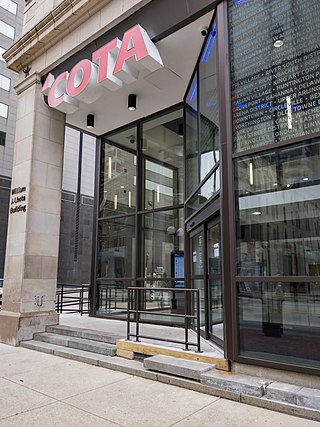
The Central Ohio Transit Authority is a public transit agency serving the Columbus metropolitan area, headquartered in Columbus, Ohio. It operates fixed-route buses, bus rapid transit, microtransit, and paratransit services.
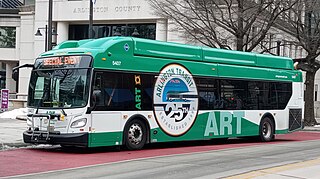
Arlington Transit (ART) is a bus transit system that operates in Arlington County, Virginia, and is managed by the county government. The bus system provides service within Arlington County, and connects to Metrobus, nearby Metrorail stations, Virginia Railway Express, and other local bus systems. Most ART routes serve to connect county neighborhoods to local Metrorail stations, as well as the Shirlington Bus Station. It includes part of the Pike Ride service along Columbia Pike, which is shared with WMATA. In 2023, the system had a ridership of 2,258,200, or about 8,100 per weekday as of the fourth quarter of 2023.
The Pinellas Suncoast Transit Authority (PSTA) is a government agency that provides public transportation for Pinellas County, Florida. The authority manages a fixed-route bus system that encompasses over 40 bus routes - including two express routes to Tampa; the Central Avenue Trolley; the Suncoast Beach Trolley; and the bus rapid transit service, the SunRunner.
Torrance Transit is a transit agency primarily serving the South Bay region of Los Angeles County. In 2023, the system had a ridership of 1,868,200, or about 7,300 per weekday as of the fourth quarter of 2023.

Lextran is a public transportation bus system serving Lexington, Kentucky. Lextran operates 25 bus routes throughout the city of Lexington. Buses converge at the Downtown Transit Center located at 220 East Vine Street. In 2023, the system had a ridership of 3,901,900, or about 14,100 per weekday as of the fourth quarter of 2023.

Knoxville Area Transit (KAT) is the operator of public transportation in Knoxville, Tennessee. Twenty-five routes operate. Service on KAT routes operate weekdays and Saturdays with routes 11, 12, 20, 22, 23, 31, 33, 34 and 41 and 42 offering Sunday service. All routes, except for routes 13,16, 19, 44 and 90 start at the Knoxville Station in Downtown. The Knoxville Trolley is a free shuttle service which provides service to the university and the downtown area. KAT formerly operated the transit service for the University of Tennessee, known as The T. In 2023, the system had a ridership of 2,332,800, or about 8,100 per weekday as of the fourth quarter of 2023.

FAX Q is a transit bus route, with some bus rapid transit features, operated by Fresno Area Express (FAX) in Fresno, California, operated as Route 1. The line began service on February 19, 2018, running from Woodward station near Woodward Park to Clovis Station along Blackstone Avenue and Ventura Avenue/Kings Canyon Road. Between the termini there are a total of 25 stations, two of which are major regional transit centers.




















